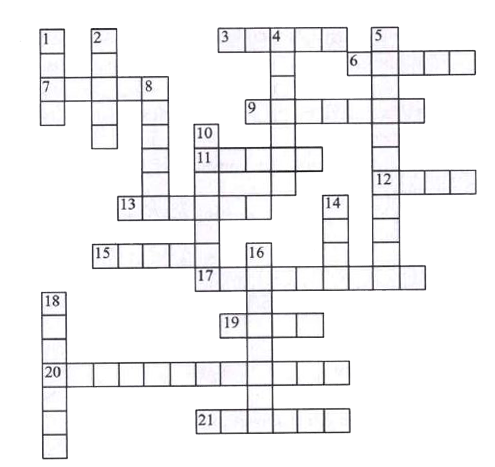Conversion of large fat globules into smaller globule is:
Emulsification
Digestion
Assimilation
Specification
The correct Answer is:A
Step-by-Step Solution:
1. Understanding the Question: The question asks about the process through which large fat globules are converted into smaller fat globules. This is a key concept in digestion, particularly in the breakdown of fats.
2. Identifying the Process: The process that converts large fat globules into smaller ones is known as emulsification. This is a crucial step in the digestion of fats.
3. Role of Bile: Emulsification occurs in the liver, where bile is produced. Bile contains bile salts, which are essential for the emulsification process.
4. Mechanism of Emulsification: Bile salts act on large fat globules, breaking them down into smaller globules. This increases the surface area of fats, making them more accessible for digestive enzymes.
5. Further Digestion: Once the large fat globules are emulsified into smaller globules, they move to the small intestine. Here, they can be further digested and absorbed.
6. Conclusion: Therefore, the correct answer to the question is that the conversion of large fat globules into smaller globules is known as emulsification.
Final Answer: Emulsification
---
Topper's Solved these Questions
- DIGESTION AND ABSORPTIONBOOK - MOTIONCHAPTER - DIGESTION AND ABSORPTIONEXERCISE - EXERCISE -3 AIPMT & NEET YEAR QUESTIONS
30 Videos
- DIGESTION AND ABSORPTIONBOOK - MOTIONCHAPTER - DIGESTION AND ABSORPTIONEXERCISE - EXERCISE -4 AIIMS | Assertion & Reason Questions
23 Videos
- DIGESTION AND ABSORPTIONBOOK - MOTIONCHAPTER - DIGESTION AND ABSORPTIONEXERCISE - EXERCISE-1 OBJECTIVE PROBLEMS
112 Videos
- CHEMICAL COORDINATION AND INTEGRATIONBOOK - MOTIONCHAPTER - CHEMICAL COORDINATION AND INTEGRATIONEXERCISE - Exercise - 4 AIIMS | Assertion & Reason Questions
44 Videos
- DIVERSITY IN THE LIVING WORLDBOOK - MOTIONCHAPTER - DIVERSITY IN THE LIVING WORLDEXERCISE - Exercise - 4 AIIMS | Assertion & Reason Questions
53 Videos
Similar Questions
Knowledge Check
_________ break the large fat globles into smaller globules.
ABile saltsBPepsinCTrypsinDAmylaseBreaking down of fats from large globules to smaller globules by Bile juice is similar to which of the following?
AEmulsification of soapsBEsterification of alcoholCFermentation of glucoseDEutrophication of waterAssertion: Lipases of bile help in the emulsification of fats.
Reason: Lipases can break large fat droplets into smaller ones.AIf both assertion and reason are true and the reason is the correct explanation of the assertion.BIf both assertion and reason are true but reason is not the correct explanation of the assertion.CIf assertion is true but reson is false.DIf both assertion and reason are false.
Read the following passage carefully and answer the questions that follows it.
Bile juice is stored in a sac called gall bladder, located near its organ of secretion, liver. The gall bladder releases the bile juice into the small intestine whenever food reaches there. Though bile juice is devoid of any digestive enzymes, it is required for the digestion of fats. The fats cannot be digested easily because they are insoluble in water and are present as large globules. Bile juice breaks down big fat droplets into smaller droplets. These are then easily digested by the enzymes released from the pancreas.
(a) Which organ secretes the bile juice ?
(b) Why is digestion of fats difficult as compared to that of other nutrients ?
(c ) How does bile juice help in digestion of fat ?
(d) Where is the digestion of fat completed ?
(e ) Does bile juice digest fat completely ?
View SolutionComplete the crossword puzzle using the clues given below:
Across
3. Scientific name for fat and oil. [5]
6. These are used for chewing food. [5]
7. Intestine that absorbs water into bloodstream. [5]
9. Nutrient group containing meat, eggs and beans. [7]
11. Type of acid that makes up proteins. [5]
12. Hole through which faeces pass out of the body. [4]
13. Storage organ for faeces. [6]
15. Fingerlike projections of small intestine. [5]
17. Scientific name for fibre. [9]
19. Hydrochloric__ is made in the stomach. [4]
20. Nutrient group containing sugar, starch and cellulose. [12]
21. Fluid in mouth. [6]
Down
1. Green chemical that breaks fats into smaller globules. [4]
2. The duodenum is the _ part of the small intestine. [5]
4. Organ at back of mouth where both food and air may pass. [7] 5. Muscular contractions of digestive tract. [11]
8. Chemical that breaks food into smaller particles .[6] 10.__ juice is found in the stomach. [7]
14. Bladder that stores bile. [4]
16. Fats are broken down to fatty acids and __ [8]
18. Example of simple sugar. [7]

View SolutionDigestion of Fats
View SolutionAssertion: Lipases of bile help in the emulsification of fats.
Reason: Lipases can break large fat droplets into smaller ones.
View SolutionWhich of the following is/are the function(s) of bile juice released from the liver?
I. Make the food coming from stomach alkaline.
II. Conversion of proteins into amino acids. III. Break down of fats into smaller globules.
View Solution
